MySQL UnionMySQL Union is an operator that allows us to combine two or more results from multiple SELECT queries into a single result set. It comes with a default feature that removes the duplicate rows from the result set. MySQL always uses the name of the column in the first SELECT statement will be the column names of the result set(output). MySQL Union must follow these basic rules:
MySQL Union SyntaxThe following are the syntax of Union operator in MySQL: We can understand the Union operator with the following visual representation: 
In the above image, we can see that the Union operator removes the duplicate rows and returns unique rows only. Union vs. JoinThe Union and Join clause are different because a union always combines the result set vertically while the join appends the output horizontally. We can understand it with the following visual representation: 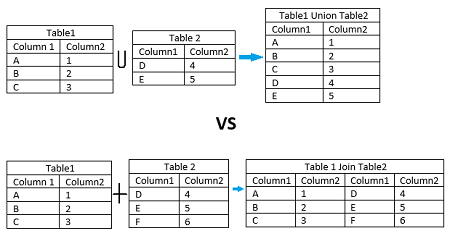
MySQL Union ExampleLet us create two tables and see how the Union operator works in MySQL. Table: student1 
Table: student2 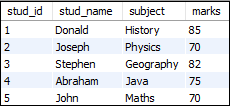
The following statement returns a result set that contains student names and subjects by combining both tables. When you execute this statement, you will notice that if the student name and subject have the same field in both tables, then each one will be listed once. It is because the Union operator returns only the distinct values. After executing the above statement, we will get the following output. 
In the above output, you can see that the MySQL Union uses the heading of the column name of the result set the same as the column name of the first SELECT statement. Sometimes you want to change the heading of the column name of the output with a different heading. We can do this by using the column aliases explicitly in the first SELECT statement. The following example explains it more clearly: It will give the following output where the heading of the column name is changed from "stud_name" to "student_name" and "subject" to "course", respectively. 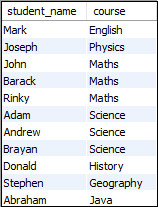
MySQL Union with ORDER BYIf you want to sort the result returned from the query using the union operator, you need to use an ORDER BY clause in the last SELECT statement. We can put each SQL SELECT query in the parenthesis and then use the ORDER BY clause in the last SELECT statement as shown in the following example: After the successful execution of the above statement, we will get the following output that sorts the student name and subject in ascending order according to the marks obtained: 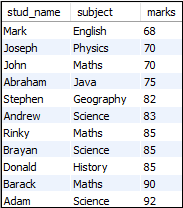
MySQL Union AllThis operator returns all rows by combining two or more results from multiple SELECT queries into a single result set. It does not remove the duplicate rows from the result set. We can understand it with the following pictorial representation: 
The difference between Union and Union All operators is that "Union" returns all distinct rows (eliminate duplicate rows) from two or more tables into a single output. In contrast, "Union All" returns all the rows, including duplicates rows. Syntax The following are the syntax of Union operator in MySQL: Example Let us take a table (student1 and student2) that we have created previously and understand how Union All operator works in MySQL. The following statement returns all student names, subjects, and marks, including all duplicate rows in a single result. It also sorts the student name in ascending order according to the marks obtained using the ORDER BY clause. When you execute the above statement, you will get the following output that contains all duplicate rows present in the result set: 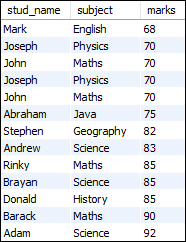
Next TopicUnion vs Union All
|
 For Videos Join Our Youtube Channel: Join Now
For Videos Join Our Youtube Channel: Join Now
Feedback
- Send your Feedback to [email protected]
Help Others, Please Share









